-
Posts
1,781 -
Joined
-
Last visited
-
Days Won
8
Content Type
Profiles
Forums
Blogs
Gallery
Events
Store
Posts posted by azyeoman
-
-
Close up of three WWI badges two of which are paper. It's amazing that some things survive over such a long time.
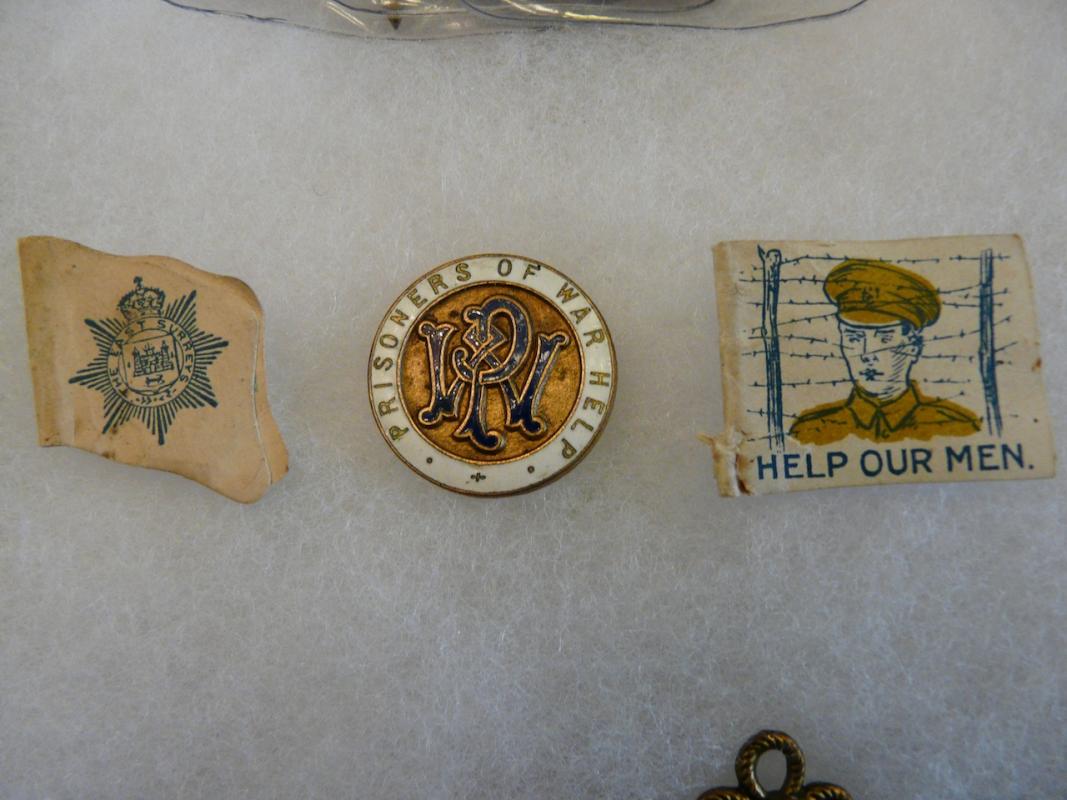
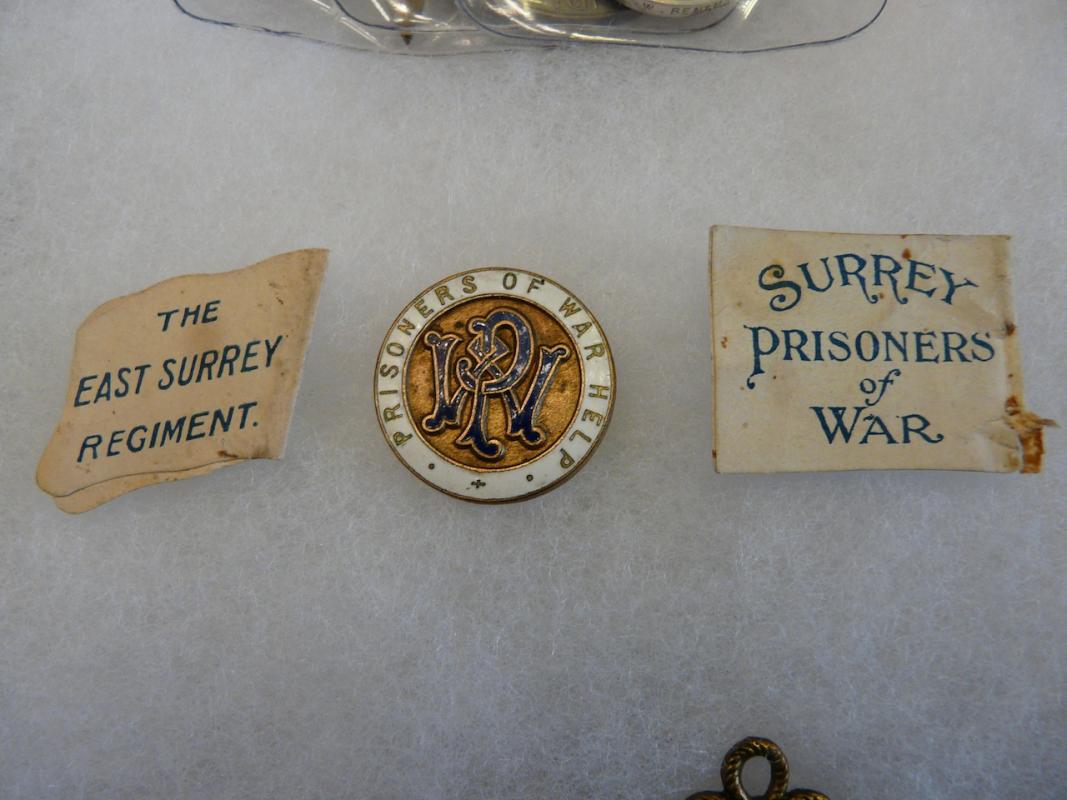 0
0 -
You can see that his drawing of his wife was a exceptionally well done drawing from the accompanying photograph. His notes to himself are interesting reflections; I'm sure all PoWs had plenty of time on their hands to think. Note the back of the photo of him and his wife; he lists where he was during his time in the forces; he travelled and saw a lot; fascinating reading.

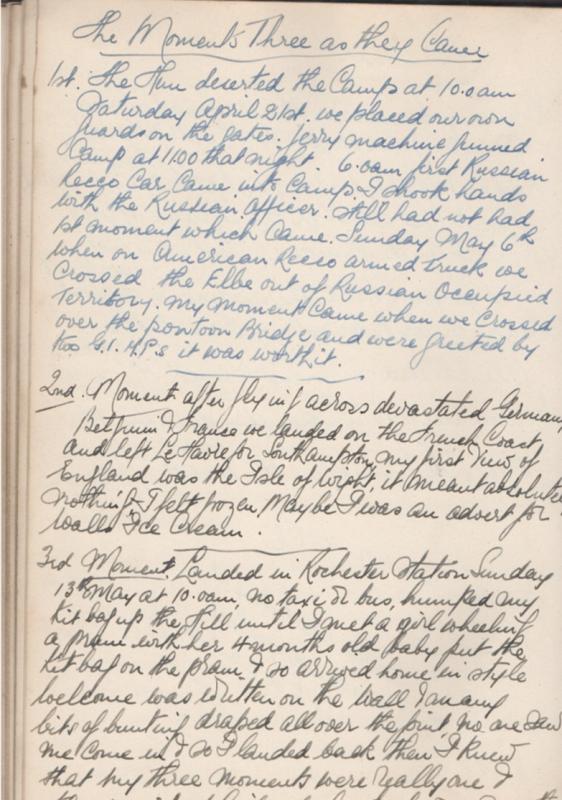
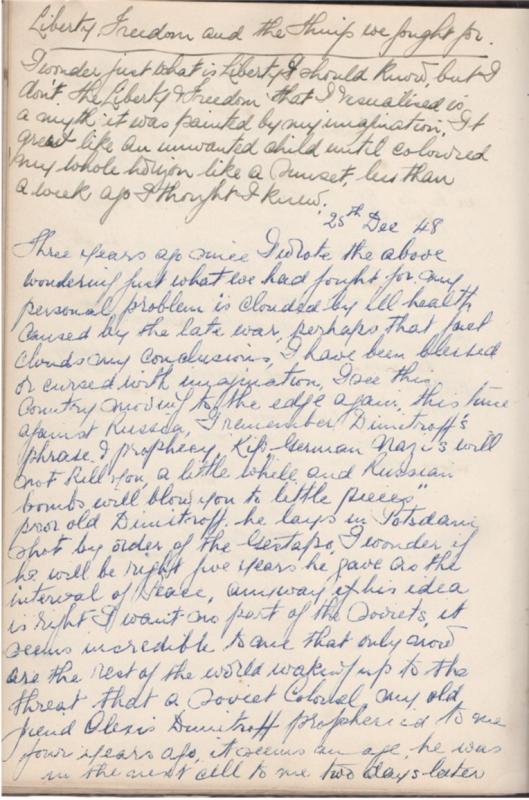
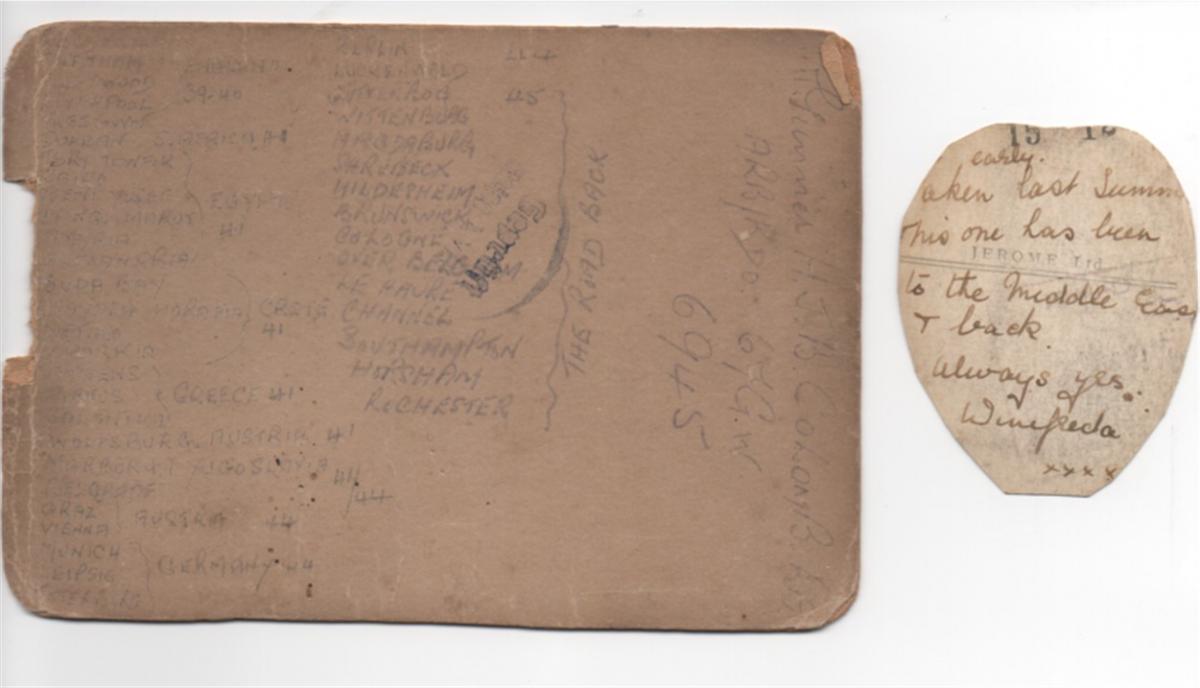 0
0 -
-
More on Kip with a great liberation photo of himon the top of the truck (front & center).
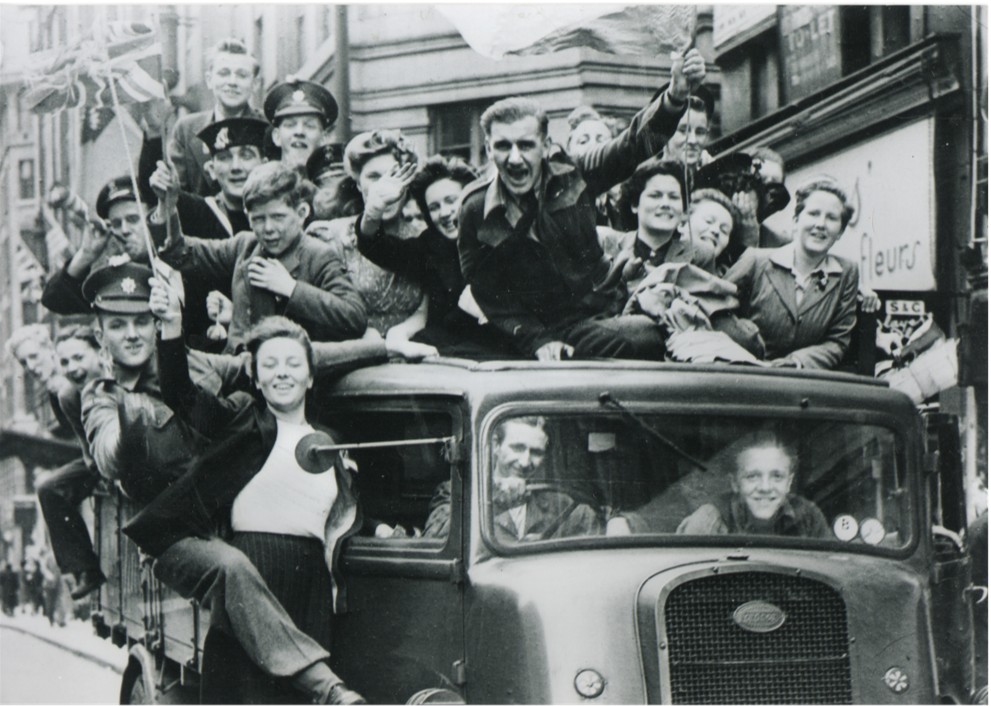
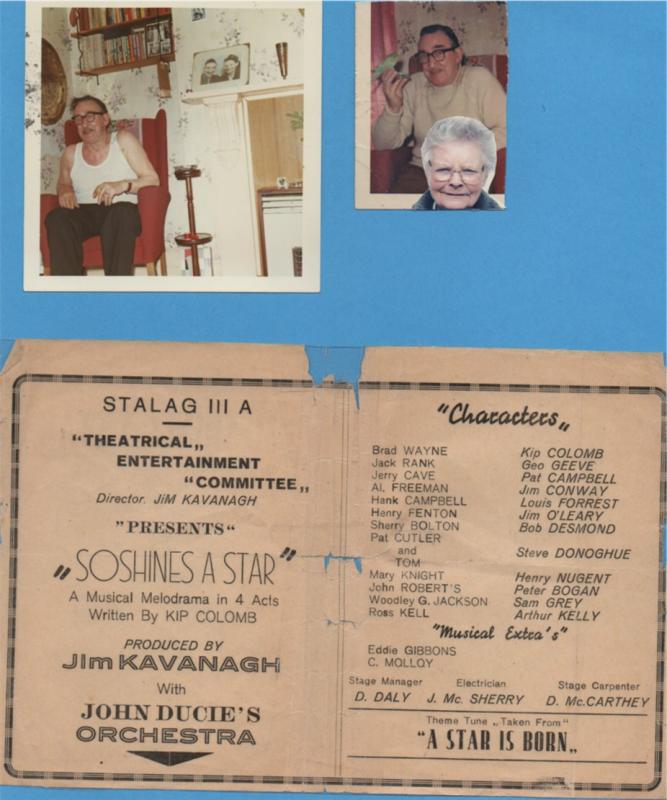
 0
0 -
More regarding his involvement as writer of one particular production.
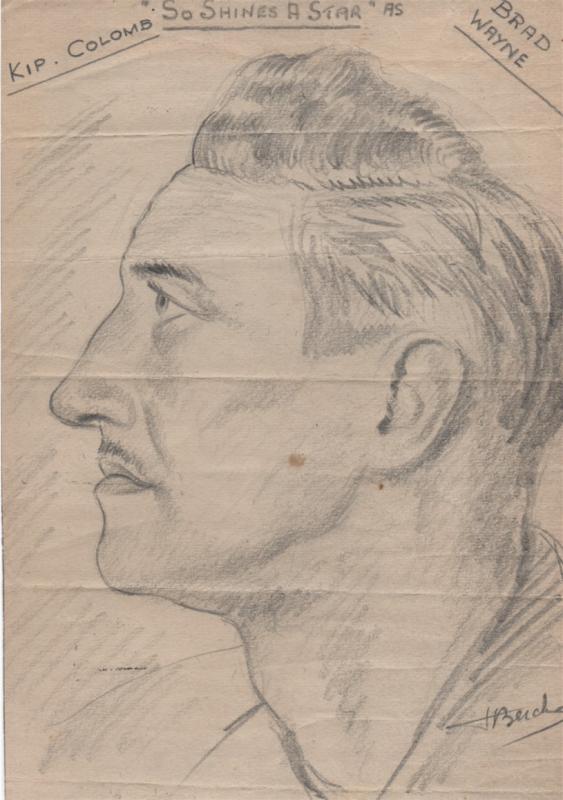
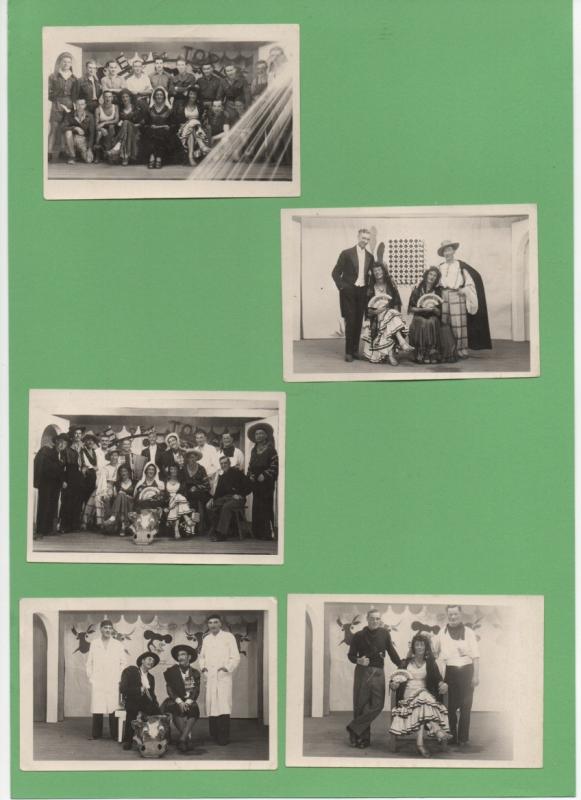
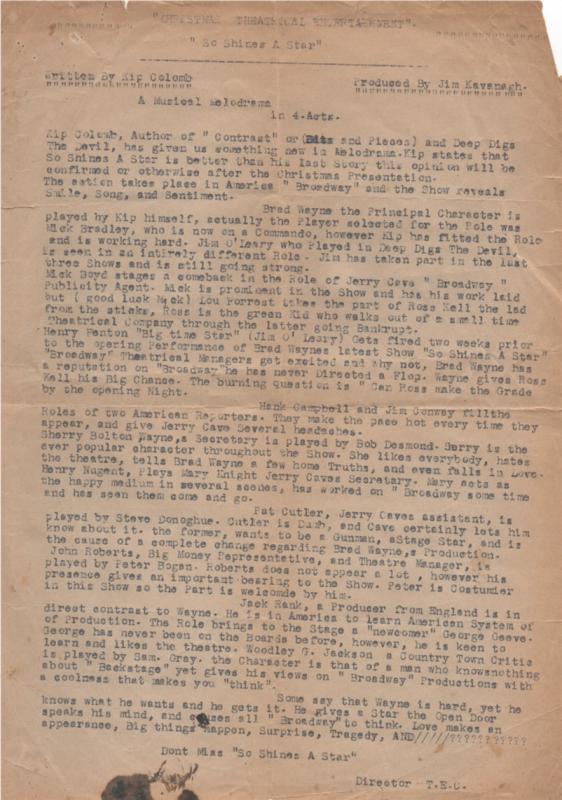 0
0 -
It's rare to find the original German documents. Obviously Kip was one of the men who was involved in amatuer theatre that was so popular in the camps.
Stalag XVIII-D, also known as Stalag 306, was a German Prisoner of War camp at Maribor (German: Marburg an der Drau) in what is now Slovenia. It opened in the spring or early summer of 1941, operating until the end of the war.
By July 1941 Stalag XVIII-D contained nearly 4,500 British and Commonwealth prisoners captured in Greece and Crete. Conditions initially were very poor, with more than 1,000 men accommodated in tents while huts were being constructed. There was an outbreak of typhus in early 1942. However the situation improved as the war went on.
Escapes assisted by Yugoslav Partisans became increasingly common, with most escapers being led south to the Partisan base and airfield at Semic in Bela Krajina. In August 1944, the largest mass rescue of POWs of the war in Europe took place when 105 Allied prisoners from a work camp administered by Stalag XVIII-D were freed by Partisans in the raid at Ozbalt.
Between August and November 1942 there was a second camp at Maribor, Stalag XVIII- B/Z.
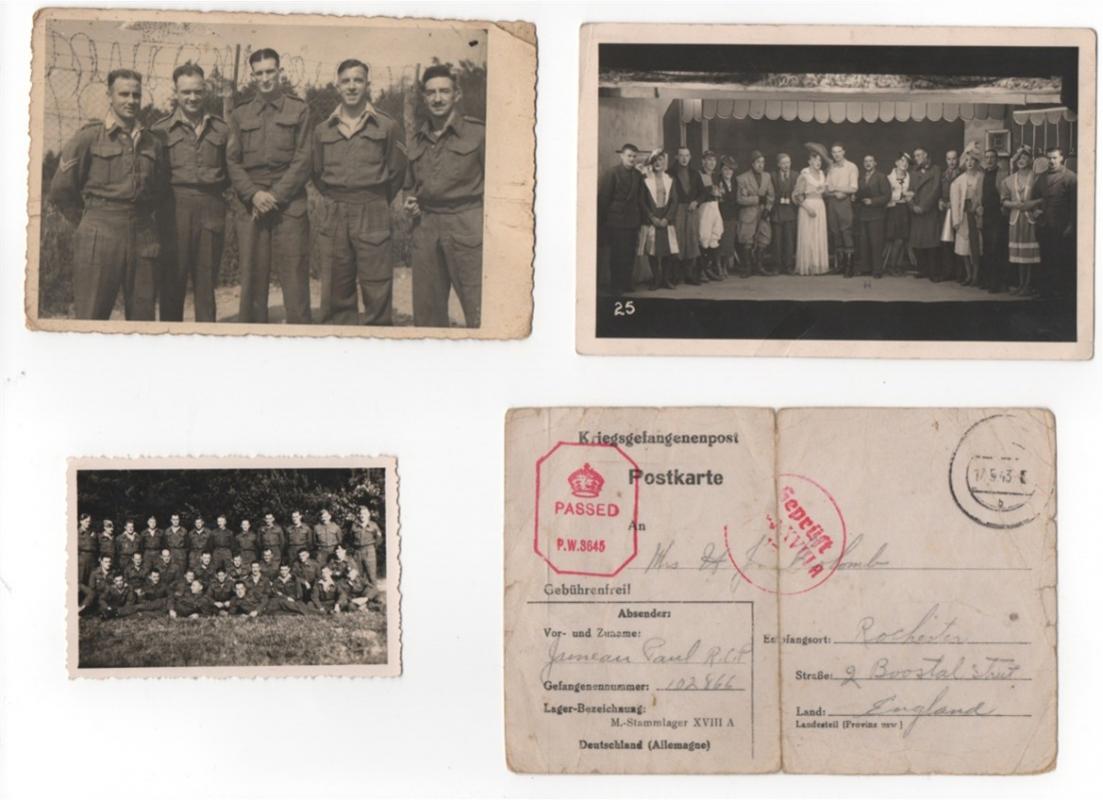
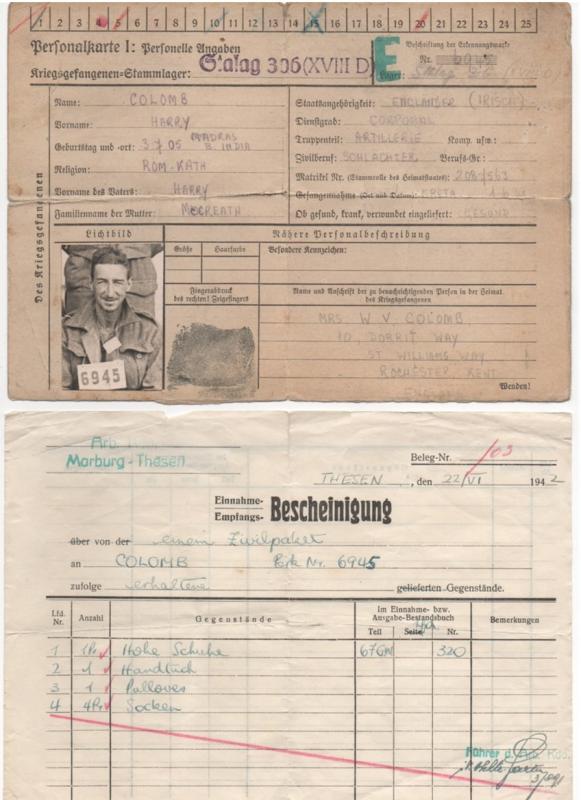
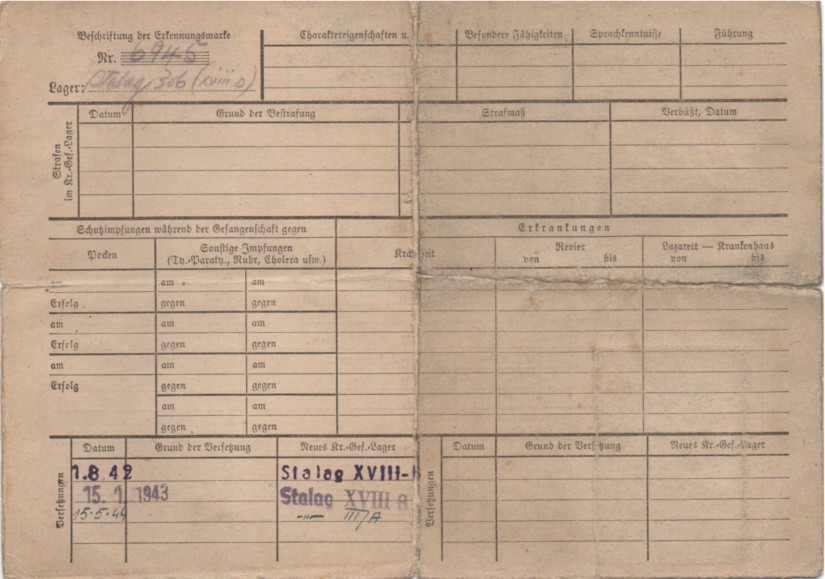
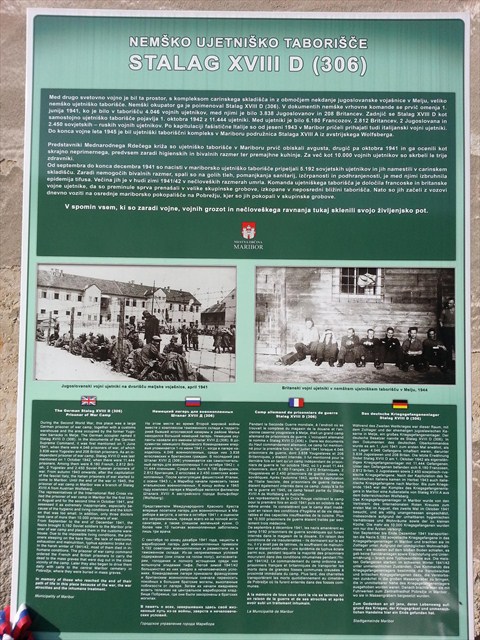

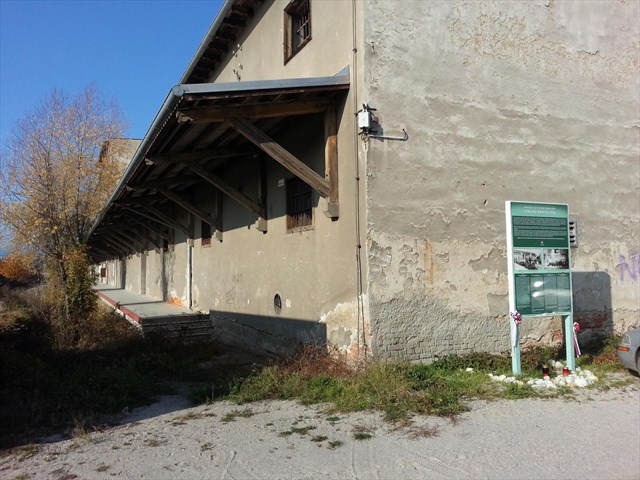 0
0 -
A most interesting addition to the collection to Harry "Kip" Colomb, RA taken PoW on Crete. It's nice to see the Greek War Medal* with this group and it's surprising that more men didn't apply for it when they could. Please note his PoW ID tag (6945) which matches his original German paperwork that he was able to retain after his liberation. The group is accompanied by origianal photos, letters, drawings and a diary some of which I'll post too. Note the cap badge is a good example of a "camp-made" one. It would be hard to find a more complete PoW group.
*Note on Greek War Medal awarded to those who fought in Greece/Crete
There is no specific British medal for Greece/Crete but the Greeks have offered medals to British Servicemen for fighting in their country in 1939-45. These Greek medals are still being processed by their Embassy and the applications are sent to Athens for processing. Applicants need an original record of service showing that they were in Greece/Crete during
the War.
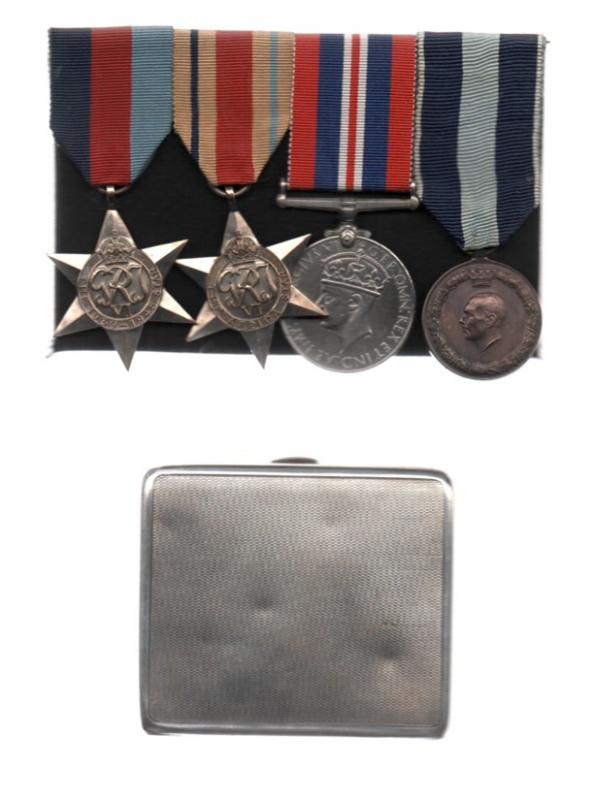
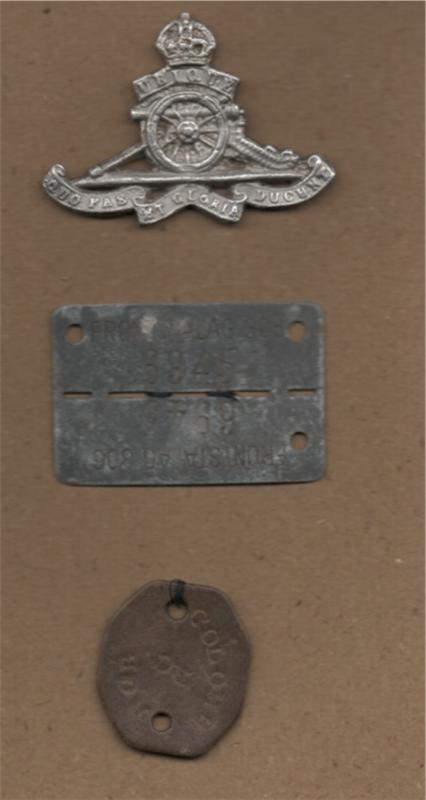
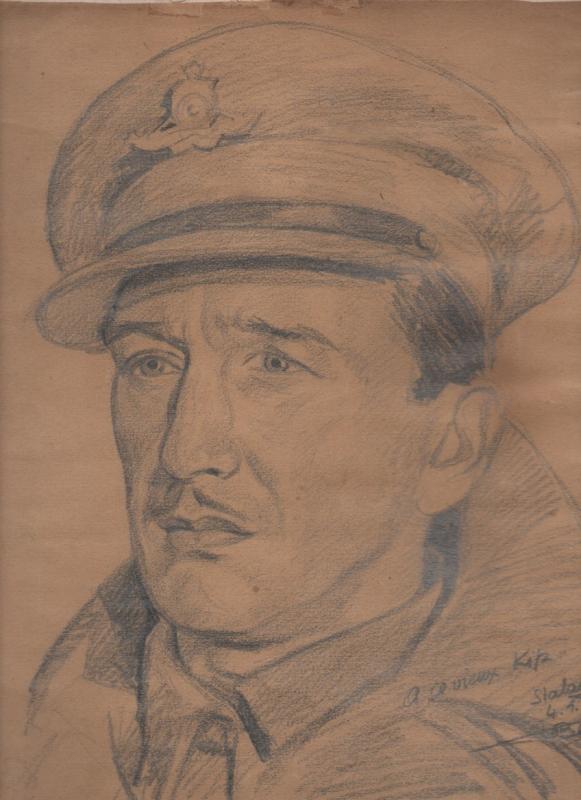 0
0 -
I've got the one my father got when he was in the UK in WWII They aren't uncommon but there are a lot of repros out there so you have to be careful. I've seen crazy prices on real ones, but they can be found for reasonable prices too.
0 -
A long service group assembled by Brochard.
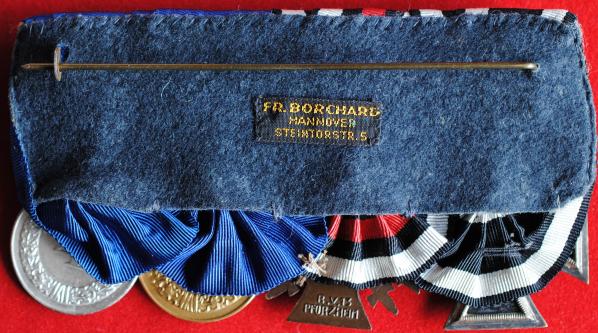
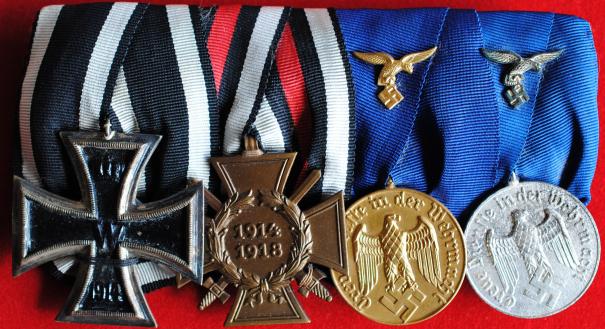 0
0 -
Thank you. That would be wonderful!
0 -
The destroyer was "Hermann Künne" and I know some German destroyers were in Spain before the 2:nd ww.
Why was she sunk and where was she? Is she in deep water? Do you have any underwater photos of her? It would be an interesting thread to see your dives on sunken military ships if you've done this more than once.
 0
0 -
Famous British POWs
1. Michael Bentine CBE
Bentine was called up for service in the RAF. He was appearing in a Shakespearean play in doublet and hose in the open-air theatre in London’s Hyde Park when two RAF MPs marched on stage and arrested him for desertion. Unknown to him, an RAF conscription notice had been following him for a month as his company toured. Once in the RAF he went through flying training. He was the penultimate man going through a medical line receiving inoculations for typhoid with the other flight candidates in his class (they were going to Canada to receive new aircraft) when the vaccine ran out. They refilled the bottle to inoculate him and the other man as well. By mistake they loaded a pure culture of typhoid. The other man died immediately, and Bentine was in a coma for six weeks. When he regained consciousness his eyesight was ruined, leaving him myopic for the rest of his life. Since he was no longer physically qualified for flying, he was transferred to RAF Intelligence and seconded to MI9, a unit that was dedicated to supporting resistance movements and helping prisoners escape. His immediate superior was the Colditz escapee Airey Neave,
At the end of the war, he took part in the liberation of Bergen-Belsen Concentration Camp. He said about this experience, “Millions of words have been written about these horror camps, many of them by inmates of those unbelievable places. I’ve tried, without success, to describe it from my own point of view, but the words won’t come. To me Belsen was the ultimate blasphemy”. (The Reluctant Jester, Chapter 17)
2. James Clavell
Following the outbreak of World War II, at the age of 16 (or 19) he joined the Royal Artillery in 1940, and was sent to Malaya to fight the Japanese. Wounded by machine-gun fire, he was eventually captured and sent to a Japanese prisoner-of-war camp on Java. Later he was transferred to Changi Prison in Singapore. Clavell suffered greatly at the hands of his Japanese captors. According to the introduction to King Rat, written by Clavell, over 90% of the prisoners who entered Changi never walked out. Clavell was reportedly saved, along with an entire battalion, by an American prisoner of war who later became the model for "The King" in Clavell's King Rat. By 1946, Clavell had risen to the rank of Captain, but a motorcycle accident ended his military career.
3. Roy Dotrice OBE
He served with the RAF from 1940 to 1945 during WWII, and was imprisoned in a German POW camp from 1942 to 1945.
4.Clive Dunn
Served in the British Army with the 4th Queen’s Own Hussars during the Second World War. He was captured in Greece and spent four years in prisoner-of-war and labor camps in Austria. Called up in 1940, Dunn joined the 4th Hussars and was eventually posted to Greece. He spent months in the Greek countryside doing his best to avoid the enemy, but was eventually captured by a German patrol. Dunn remembered two weeks as a prisoner near Corinth with “thousands of starving and dysentery-ridden British, Indians and Palestinians”. He was then transported to Austria. “We were packed into cattle trucks like rotten sardines, smelly from diarrhea and dysentery, with no food, one petrol can for water and one for use as a latrine.” The journey took seven days. On arrival at the POW camp the prisoners gave the guards a list of their civilian employment. Dunn remembered that after so long without food, 70 per cent of the 2,000 men claimed to have been butchers or cooks. During his time as a POW, Dunn became unofficial medical orderly, camp leader and cleaner. On one occasion, after spending hours persuading the camp commander to let him buy supplies from a village shop, and days compiling a list of necessities with the men, Dunn returned with everything he had been allowed to purchase: three razor blades and a box of matches. After liberation, he remained in the Army until 1947,
5. Denholm Elliot CBE
In World War II, he joined the RAF, training as a sergeant radio operator and gunner and serving with No. 76 Squadron under the command of Leonard Cheshire VC. On the night of 23/24 September 1942, his Handley Page Halifax bomber took part in an air raid on the U-boat pens at Flensburg, Germany. The aircraft was hit by flak and subsequently ditched in the North Sea near Sylt, Germany. Elliott and two other crewmembers survived and he spent the rest of the war in a POW camp in Silesia. While imprisoned he became involved in amateur dramatics.
6. Terry Frost RA
Frost first began to paint whilst interned in a POW camp during the Second World War where he met and was taught by Adrian Heath while a POW.
7. Michael Goodliff
He joined the British Army at the beginning of WWII, and received a commission as a 2nd Lt. in the Royal Warwickshire Regiment in February 1940. He was wounded in the leg and captured at the Battle of Dunkirk Goodliffe was incorrectly listed as killed in action, and even had his obituary published in a newspaper. He was to spend the rest of the war a prisoner in Germany. While in captivity he produced and acted in (and in some cases wrote) many plays and sketches to entertain fellow prisoners. These included two productions of William Shakespeare’s Hamlet, one in Tittmoning and the other in Eichstatt , in which he played the title role. He also produced the first staging of Noel Coward’s Post Mortem at Eichstätt. A full photographic record of these productions exists. After the war he resumed his professional acting career. As well as appearing in the theatre, he worked in film and television. He also appeared in The Wooden Horse in 1950 and in other POW films. He suffered from depression and committed suicide in 1976.
8. Adrian Heath
Heath served in the RAF as a tail gunner in Lancaster bombers in WWII, but spent almost the entire war as a POW, during which period he became friends with and taught fellow POW Terry Frost to paint.
9. Sam Kydd
Early in the war, he went to France with the British Expeditionary Force, but was quickly captured, spending the rest of the war in Stalag XX-A a camp near Thorn in German-occupied western Poland. Kydd later wrote of his experiences as a POW in his autobiographical book For You The War Is Over.
During his internment in the German prisoner-of-war camp, where he remained for the next five years, he took command of the camp's theatrical activities - devising and staging plays. He felt so strongly about his work there that, when he was offered repatriation after three years, he turned it down to continue with his theatrical work. In recognition of his valuable services during these years, he was awarded a pair of drama masks made by the Red Cross from barbed wire.
10.Desmond Llewelyn
The outbreak of WWII in September 1939 halted his acting career; Llewelyn was commissioned as a second lieutenant in the British Army, serving with the Royal Welch Fusiliers. In 1940, he was captured by the German Army in France, and was held as a POW in Colditz Castle for five years.
11. George Miller DSO MC
His second published book Horned Pigeon tells of his service in the 1st Battalion the Rifle Brigade in North Africa. As a second lieutenant he was in command of a scout platoon of Bren carriers and motorcyclists. He had an uncomfortable time with the second in command of his battalion Major Vic Turner. His scout platoon was overrun by Rommel's advance at Gazala in the Libyan desert. For a time he and some of his platoon evaded the Germans but eventually he was captured and briefly brought in front of Rommel himself. He was handed over to the Italian army who took him to the prisoner of war camp Campo 66 in Capua in the Padula Monastery. After a number of escape attempts he was moved to Campo 5 at Gavu, a high-security POW camp, where, like Colditz the 'escapers' were confined. One of his fellow inmates for example was David Stirling who had established the SAS.
After the Italian surrender the Allied prisoners were entrained for Germany. Millar and a companion jumped from the train in Germany. Millar and Binns made their way from Munich to Strasbourg where they were separated. Millar continued to Paris and then Lyon. While in the south of France he was found by the SOE section run by Richard Heslop DSO codenamed Xavier and Elizabeth. He volunteered to stay in France and fight with the Resistance. When Heslop refused Millar asked Heslop to recommend him to SOE for the future. Finally, after more than three months on the run, made it across the Pyrenees and over the Spanish border to Barcelona. Back in London he pulled strings and managed to get into F Section of SOE, and was prepared for a return to France by Vera Atkins and Maurice Buckmaster among others. He was parachuted into the Besancon area of France just before D-Day and returned to England three months later when the US Army pushed the Germans out of that part of France. On his return took a month's leave, rented a cottage in the country and wrote the manuscript of Maquis, the nickname of the French Resistance. In this immediate and vivid account he drew on his journalistic skills to describe life living in the woods with the Maquis, various sabotage missions against the railways and trying to organize the villages before liberation by the Americans. He meets Paul, an American radio operator, the competing local resistance chiefs, and eventually joins the locally famous Boulaya Maquis sold well and was followed by Horned Pigeon which was based on 'prolific notes I had dictated...to a shorthand typist, during the month's leave following my escape.' The second book 'was, if anything, more successful than the first'.
12. W.H. Murrey
At the outbreak of WWII, Murrey joined the Argyll and Sutherland Highlanders and was posted to the Middle East and North Africa. He was captured south of Mersa Matruh during the Western Desert Campaign in a retreat to El Alamein in June 1942 by a tank commander from the 15th Panzer Division who was armed with a machine-pistol. A passage in Mountain magazine (#67, 1979) describes the moments after his capture:
To my astonishment, he [the German tank commander] forced a wry smile and asked in English, 'Aren't you feeling the cold?' ... I replied 'cold as a mountain top'. He looked at me, and his eyes brightened. 'Do you mean – you climb mountains?' He was a mountaineer. We both relaxed. He stuffed his gun away. After a few quick words – the Alps, Scotland, rock and ice – he could not do enough for me. Murrey went on to spend three years in POW camps in Italy (Cheti) Germany ( Moosberg, Brunswick) and Czechoslovakia (Oflag VIII-F in Marisch Trubeau). While imprisoned, Murray wrote a book entitled Mountaineering in Scotland. The first draft of the work was written on the only paper available to him: rough toilet paper. The manuscript was found and destroyed by the Gestapo. To the incredulity of his fellow prisoners, Murray's response to the loss was to start again, despite the risk of its loss and that his physical condition was so poor from the near starvation diet that he believed he would never climb again. Nevertheless, Murray was deputy leader to Eric Shipton on the 1951 Everest Reconnaissance Expedition, but failed to acclimatize at altitude and so was not included in the 1953 team. He also explored part of the Api group in Nepal with John Tyson in 1953.
13. Airey Neave DSO OBE MC
Neave joined the Territorial Army and became an officer of the Royal Artillery in the regular British Army at the beginning of WWII. He was sent to France in February 1940 as part of a searchlight regiment, and was wounded and captured by the Germans at Calais on 23 May 1940. He was imprisoned at Oflag IX-A/H near Spangenberg and in February 1941 moved to Stalag XX-A near Thorn in German-occupied western Poland. In April 1941 he escaped from Thorn with Norman Forbes. They were captured near Itow while trying to enter Soviet-controlled Poland and were briefly in the hands of the Gestapo. In May, they were both sent to Oflag IV-C, which is often referred to as Colditz Castle because of its location. Neave made his first attempt to escape from Colditz on 28 August 1941 disguised as a German N.C.O. He did not get out of the castle as his hastily contrived German uniform (made from a Polish army tunic and cap painted with scenery paint) was rendered bright green under the prison searchlights. He tried again on 5 January 1942, again in disguise, together with Dutch officer Anthony Luteyn. Better uniforms and escape route (they made a quick exit from a theatrical production using the trap door beneath the stage) got them out of the prison and by train and on foot they travelled to Gdansk in Poland from where Neave took a boat to neutral Sweden. He was later recruited as an intelligence agent for MI9. While at MI9, he was the immediate superior of Michael Bentine CBE. He also served with the International Military Tribunal at Nuremberg investigating Krupp. As a well-known war hero - as well as a qualified lawyer who spoke fluent German - he was honoured with the role of reading the indictments to the Nazi leaders on trial. He wrote several books about his war experiences including an account of the Nuremberg Trial.
14. Donald Pleasance OBE
During WWII Pleasence was initially a conscientious objector, but later changed his stance and was commissioned into the RAF, serving with 166 Squadron, RAF Bomber Command. His Avro Lancaster was shot down on 31 August 1944, during a raid on Agenville. He was taken prisoner and placed in a German POWcamp, where he produced and acted in plays. He would later play Flight Lieutenant Colin Blythe in The Great Escape where much of the story takes place inside a German POW camp.
15. Ronald Searle CBE RDI
In April 1939, realizing that war was inevitable, he abandoned his art studies to enlist in the Royal Engineers. In January 1942, he was stationed in Singapore. After a month of fighting in Malaya, Singapore fell to the Japanese, and he was taken prisoner along with his cousin Tom Fordham Searle. He spent the rest of the war a prisoner, first in Changi Prison and then in the Kwai jungle, working on the Siam-Burma Death Railway. Searle contracted both Beri-beri and Malaria during his incarceration, which included numerous beatings, and his weight dropped to less than 40 kilograms. He was liberated in late 1945 with the final defeat of the Japanese. Immediately after the war, he served as a courtroom artist at the Nuremberg Trails.
16. E.W. Swanton CBE
Swanton served in the Bedfordshire Yeomanry in WWII. He was in the rank of acting major when wounded and captured by the Japanese in the fall of Singapore, and spent three years as a POW. His unit spent time in camps along the Burma-Siam railway, and he contracted polio and lost a considerable amount of bodyweight, but his well-thumbed copy of the 1939 Wisden Crickters’ Almanack boosted morale. He later described playing cricket with makeshift equipment and under conditions of extreme privation and the constant threat of brutality in an article, "Cricket under the Japs", for the 1946 edition of Wisden Cricketers’ Almanack.
17. Charles Upham VC and bar (The most highly decorated man in the British Army in WWII)
Having been taken POW in his second VC action, he was sent to an Italian hospital to recuperate but attempted to escape numerous times before being branded "dangerous" by the Germans. One attempt to escape occurred when a group of POWs were being transported in open trucks through Italy, Upham jumped from the truck at a bend and managed to get 400 yards (370 m) away before being recaptured. He had broken an ankle in jumping from the moving truck. Another attempt occurred when he was being moved between prison camps on a civilian train while guarded by two Germans. Upham was only allowed to visit the toilet when the train was traveling at high speed, to prevent him from jumping through a window. Nevertheless, Upham prised open the toilet window and jumped onto the tracks, knocking himself unconscious. On a third occasion, he tried to escape a camp by climbing its fences in broad daylight. He became entangled in barbed wire when he fell down between the two fences. When a prison guard pointed a pistol at his head and threatened to shoot, Upham calmly ignored him and lit a cigarette. This scene was photographed by the Germans as "evidence" and later reprinted in his biography, Mark of the Lion, by Kenneth Sandford. After this incident, Upham was considered extremely dangerous and was placed in solitary confinement. He was only allowed to exercise alone, while accompanied by two armed guards and while covered by a machine gun in a tower. Despite these precautions, Upham bolted from his little courtyard, straight through the German barracks and out through the front gate of the camp. The guard in the machine gun tower later told other prisoners that he refrained from shooting Upham out of sheer respect, and as he could see German soldiers coming up the road who he expected to capture Upham. Upham was soon recaptured and sent to the infamous Oflag IV-C (Colditz) on 14 October 1944.
0 -
You're absolutely right; they're scarce to find mounted. Tom Yanacek mentions it specifically in his wonderful book on parade mounted bars. Like you, I was fortunate to find one and here it is. I hope others post theirs. Congratulations!
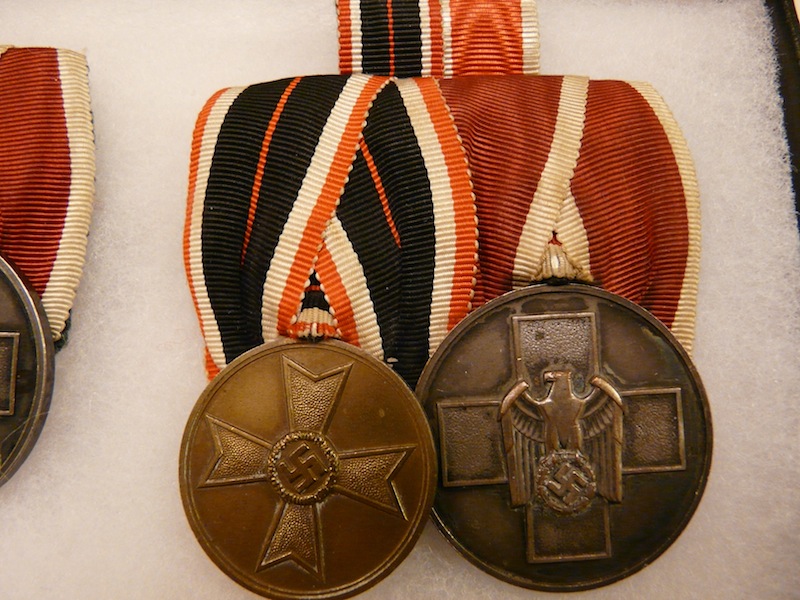 0
0 -
that is a LOVELY bar!but now noor,s seen it your in trouble!
 iv not seen a as early bar with so many forgin awards on it!
iv not seen a as early bar with so many forgin awards on it!I'm going to keep it as he was recommended for a VC and it's the closest I'll ever get to getting one of those. ; ) I also like the fact that Queen Victoria's eyes most certainly saw this very ribbon bar from time to time.
0 -
Fantastic additions to the collection!
I am busy with some research on an escapee from Tobruk, a great group will post soon.
Regards
Brian
Thanks Brian, I am looking forward to seeing what you post. As for these early PoW groups, the more I read about what happened in May 1940, the more amazed I am at what these men whose stories we're trying to keep alive went through.
0 -
This I picked up decades ago is to General Sir Francis Seymour, Bart. K.C.B. Scots Fusilier Guards
Order of the Bath, Crimea, Officer Legion of Honour, Saxe-Ernestine House Order, Turkish Crimea, Turkish Order of the Mejidiie
General Sir Francis Seymour, 1st Baronet, GCB (2 August 1813, Lisburn, County Down – 10 July 1890, Kensington Palace, London) was a British Army officer and courtier.
Seymour was the eldest son of Henry Augustus Seymour (1771–1847) and his wife, Margaret (died 1867). In 1834, he was commissioned as an ensign in the 19th Regiment of Foot and promoted to lieutenant in 1837. At the request of Leopold I of Belgium, Seymour accompanied Prince Albert of Saxe-Coburg and Gotha on the latter's visit to Italy in the winter of 1838–1839. Upon Albert's marriage to Queen Victoria in 1840, Seymour became his Groom-in-Waiting, an office he continued as such after Albert's death in 1861, to Victoria until 1876, when he became an Extra Groom-in-Waiting.
In 1840, Seymour was promoted to captain and exchanged to the Scots Fusiliers Guards in 1842. In 1854, he served with the Guards in the Crimean War and was present at the battles of Alma, Balaclava and Inkerman. He was wounded at Inkerman and also later at the Siege of Sevastopol. In 1854, he was brevetted colonel and appointed a Companion of the Order of the Bath in 1857, having also received the Legion d'honneur (fourth class) and the Medjidie (fourth class).
Promoted to major in 1858, lieutenant-colonel in 1863 and major-general in 1864, Seymour was made a barnet in 1869 and went on to command the troops in Malta from 1872 to 1874. He was promoted to lieutenant-general in 1873, colonel of the 11th (North Devonshire) Regiment of Foot in 1874, Knight Commander of the Order of the Bath in 1875 and general in 1877. He was also appointed Master of the Ceremonies in 1876 and sometime appointed a Knight Grand Cross of the Saxe-ERnestine House Order. He retired in 1881 after being promoted to a Knight Grand Cross of the Order of the Bath that year.
On 25 August 1869, Seymour had married Agnes Austin, the eldest daughter of Rev. H. D. Wickham of Horsington, Somerset and they had three daughters and one son, Albert Victor Francis Seymour, who was born when Seymour was 74 years old and later served as a Page of Honour to Queen Victoria. Seymour died at Kensington Palace in 1890 and his baronetcy was inherited by his two year old son.
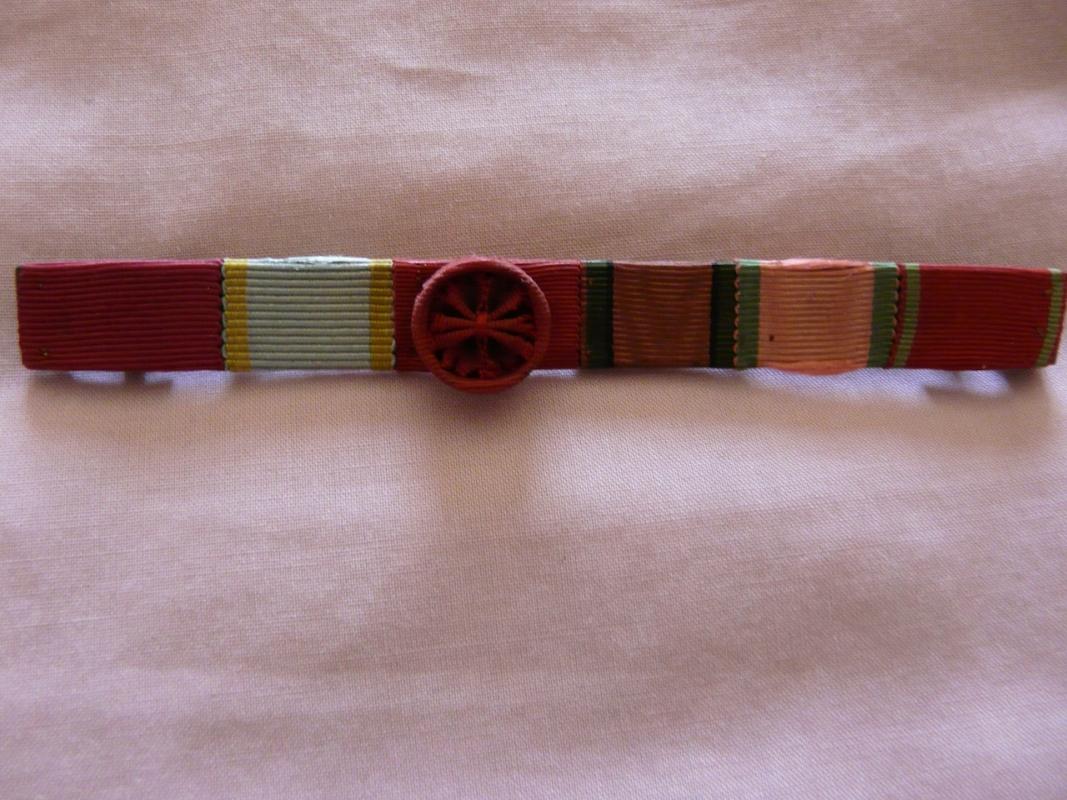

 0
0 -
This photograph from the KRRC Museum archives features 1st Battalion, Queen Victoria’s Rifles (QVR), a TA regiment affiliated to The King’s Royal Rifle Corps, training as a motorcycle reconnaissance battalion in the New Forest near Beaulieu in 1939. The Battalion comprised three motorcycle companies, each armed with ten Bren guns and the men with pistols instead of rifles. At the outbreak of the war the Battalion was the divisional reconnaissance battalion of the 1st London Division responsible for Home Defense in and around London. In March 1940 the Battalion was warned for early service overseas and on 20 April became a part of the newly-formed 30 Infantry Brigade under the command of Brigadier Claude Nicholson. When the Brigade was sent to defend Calais on 22 May 1940, it deployed without its motorcycles and most of its other equipment. After a tenacious fight, nearly all the 550 members of the Battalion were killed, wounded or taken prisoner when the troops defending the town were forced to surrender to the Germans on 26 May.
 0
0 -
A fellow QVR POW's story.
My story about Dunkirk is somewhat different to the sad story of the men on the beaches, but it does have a bearing on the events at the time. I joined the Territorial army in 1937 aged 18. I signed up with the REME at Southall in the Searchlight Battalion. I transferred to the Queen Victoria Rifles in Davies Street West London after about a year, as the Searchlights didn’t interest me enough. When war was declared I was at our annual camp and was therefor immediately retained. I was sent to do guard duty in Oxford St London for about two weeks and from there was sent to Paddock Wood, Kent for further training. On the 20/5/40 we were dragged from our beds at about midnight and told to entrain for Dover. On arrival at Dover we boarded a passenger ferry and were shipped to Calais arriving the same day. We were ordered into the town to defensive positions. We had been sent to Calais to act as/create a diversion to draw some German fire away from the BEF who were retreating to Dunkirk. On the 26/5/1940, after several days of fighting, my company surrendered to the Germans on the beach (to where we had been pushed back). To my knowledge there was no attempt to evacuate troops from Calais. Eventually, with the rest of the Regiment and other units, we were marched into Germany, we were then put in cattle trucks and taken to Stalag 8B (Lamsdorf) in Poland. This journey took about 5 weeks! Once at Lamsdorf most of my war was spent on working parties in the Sosnovitch area working on drainage, digging, laboring in iron foundries and coalmines and at a sawmill. Most of the Polish people I worked with were kind to me. My memories of POW life are of freezing temperatures, lack of food, and the delight of receiving Red Cross Parcels. Eventually in 1945 about 20 of us who were on a working party awoke to discover that out guards had fled during the night because of the advancing Russians, leaving us to our own devices. We decided to head towards the approaching gunfire and were met by the Russians. The Russians, once they were satisfied that we were British, fed us on food ransacked from local shops, and gave us as much vodka as we could drink. The following day the Russians put us on a truck and sent us to the Americans. The next day we were flown in USAF Dakotas to Rheims and then in RAF Lancasters to an airport near Oxford. After 2/3 days we were given civilian clothing and sent on leave.
As told by George Gooding, 18 March, 2004: BBC WW2 People’s War
More info:
0 -
A newly acquired group for the collection of another man captured at Calais.
Pair to Rfmn John Williams consisting of a 1939-45 Star and War Medal. Both are unnamed as issued and mounted as worn. Mounted for display along with cap badges of the units he served with (Q.V.R., R.A.O.C., R.A.M.C., R.A. and R.E.)
Along with three other mounted commemorative medals - the National Service Medal, Dunkirk Medal 1940, and a Polish Auschwitz Cross (I'm not sure if he is actually "entitled" to the Polish cross, but Thorn was in Poland) and a autographed copy of the book "For You, The War Is Over" by the actor/author Sam Kydd who was also taken prisoner with the Q.V.R. at Calais and in which he describes the battle and his subsequent captivity. Also included are two family photographs and two of the recipient in uniform - one wearing the Q.V.R. badge and with a R.A. colleague. His Certificate of Service showing that he was discharged from the R.E. (T.A.) on 23/11/52; and his original Soldier's Service and Pay Book giving details are included. All to 6848378 Rfmn. John William Hill Q.V.R. Williams was born on 30/10/17 and was a barman before enlisting on 18/1/40. He served in France with the 1st Bn. Q.V.R. and was taken prisoner in the epic Battle of Calais. He was repatriated because of ill health on 16/1/43 and was in hospital for ten months before being passed as fit for limited service; he was with the R.A.O.C. and R.A.M.C 1944-46 and with the R.A. 1948 and the R.E. from 1948-52.
At the outbreak of World War II, 1/QVR and 2/QVR were formally made part of the KRRC, becoming the 7th and 8th KRRC Battalions respectively. The 7th KRRC (1st Queen Victoria's Rifles) were designated a motorcycle reconnaissance battalion and armed with revolvers instead of rifles. As part of 30th Infantry Brigade, they were hurriedly sent across the English Channel, but due to an error, their motorcycles and sidecars were left in England. They fought in the desperate operation at Calais between 23 and 26 May 1940, which bought valuable time for the main Battle of Dunkirk. All were either killed or captured and the battalion had to be reconstituted from scratch.
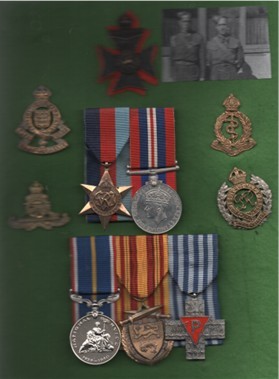
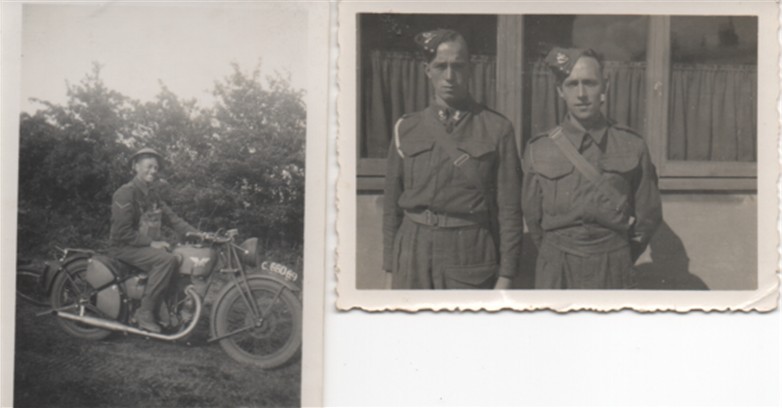
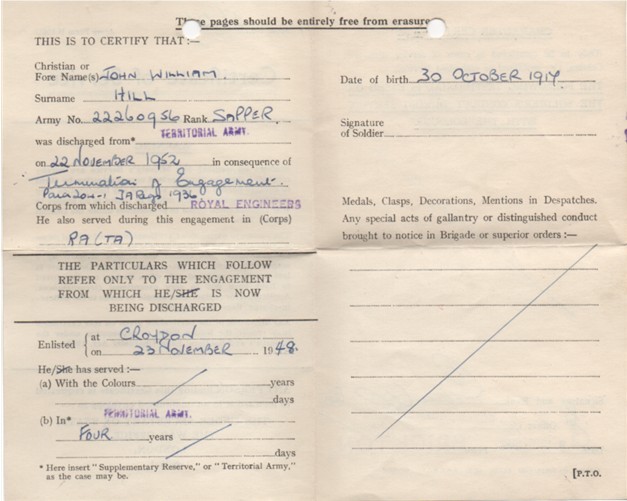
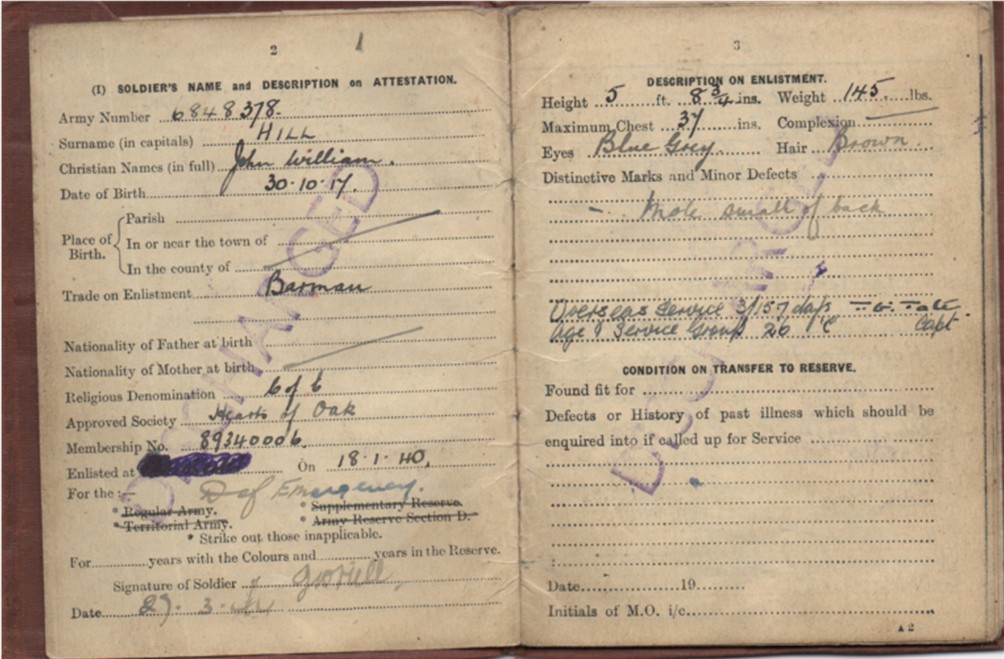
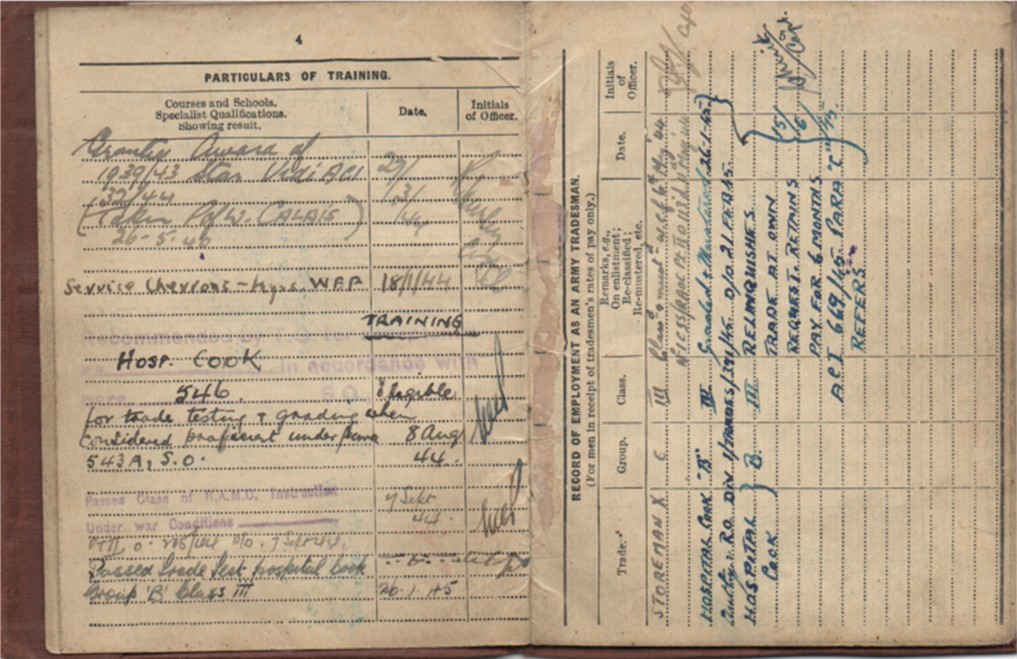 0
0 -
Hmm, was just wondering as my Wifes Grandfather had a medal and this 3rd class decoration on his bar.
Best
Chris
I've seen quite a few medals mounted and have some in the collection above, but I've not ever seen a 3rd class mounted with a medal. I suspect that is exceptionally unusual.
0 -
Great photos; thanks for posting them. I've never seen the Ethiopian Korean War medals worn. Thanks again!
0 -
Here is a silly question... did one not get the social welfare medal, then the cross?
best
Chris
No question is silly. If so, then I ask them all the time. : )
The Social Welfare Decoration was a German Civil Service Award, which was issued in the 1930s and the 1940s under the authority of Nazi Germany. The decoration was issued in three classes and was awarded for a wide variety of services to the German state. The "Medal of Social Welfare" was also issued for lesser degrees of civil service, not warranting the higher presentation of a class award.
The main requirement for the award was that the service rendered should be to the benefit of the civil population. Reinhard Heydrich was awarded the decoration for his running of the Gestapo in the 1930s and for providing "security" to the German people. The infamous Doctor Joseph Mengele was also awarded the decoration in 1941, for providing medical services to wounded soldiers and civilians alike on the battlefields of the Eastern Front.
0 -
Haven't added anything to the collection in ages, but thought a nicely mounted Social Welfare Medal 3rd Class would be a nice addition; especially since they're scarcely seen mounted on medals bars. The enamel work on the Austrian WWI Red Cross Medal is in excellent condition too. All in all, an interesting two war Austrian group.
The Karl Troop Cross (Karl Truppenkreuz) was instituted on 13 December 1916 by Emperor Karl 1 of Austria-Hungary. The cross was awarded until the end of the First World War to soldiers of the Austro-Hungarian Army , regardless of rank, who had been with a combatant unit for at least twelve months and who had actually served at the front. The medal is of zinc and consists of a cross pattee resting on a laurel wreath. The obverse bears the Latin inscription "GRATI PRINCEPS ET PATRIA, CAROLVS IMP.ET REX", (A grateful prince and country, Karl, Emperor and King). The reverse shows the Austrian and Hungarian Imperial crowns above the letter "C" (for Carolus) with the inscription "VITEM ET SANGVINEM", (With life and blood) and the date MDCCCCXVI, (1916). The design is based on the design of the Army Cross of 1813-1814 (usually known as the ‘Canon Cross’ – ‘Kanonenkreuz’). The cross was worn on the left chest from a red ribbon with alternate red-white side strips towards each edge. A total of 651,000 were awarded.
According to Robin Lumsden's book, Medals and Decorations of Hitler's Germany, "The Social Welfare Decoration was used to recognise meritorious schievement in all manner of services tending to the general and spedific needs of the German population, including the fields of medicine, nursing, social work, charity, housing, education and recreation. Recipients included individuals from every walk of civil, political and military life. Many award recommendations were submitted through the Nationalsozalistische Volkswohlfahrt (NSV), the National Socialist People's Welfare Organisation, which ulitmately included over 20% of the entire German population in its membership." In 1942, swords were added the the ribbon denoting military-related service, primairly doctors and nurses engaged in careing for wa wounded on the Eastern Front. Decorations with swords were accorded a far highter status than those without swords.
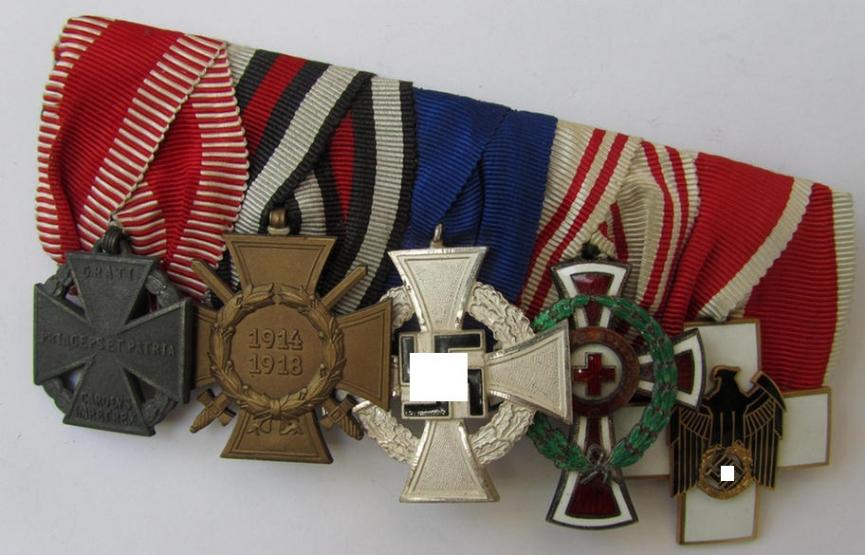
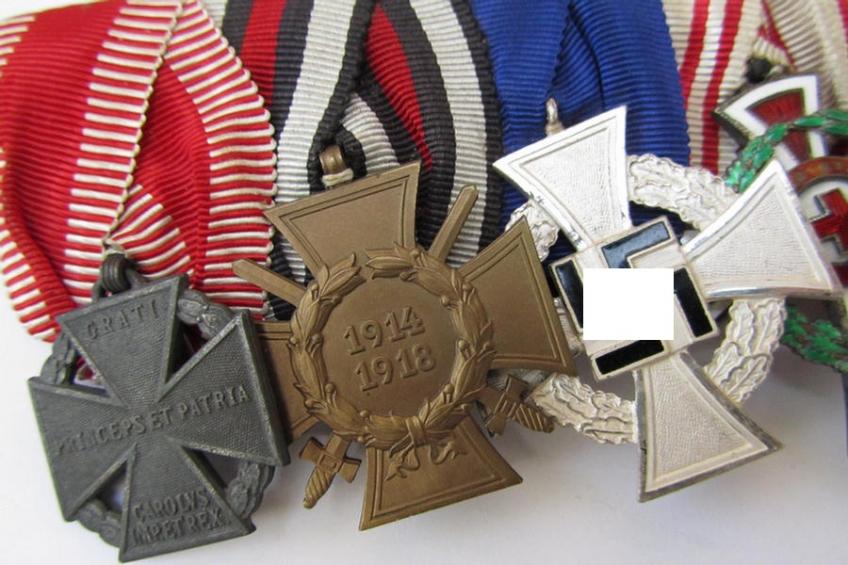
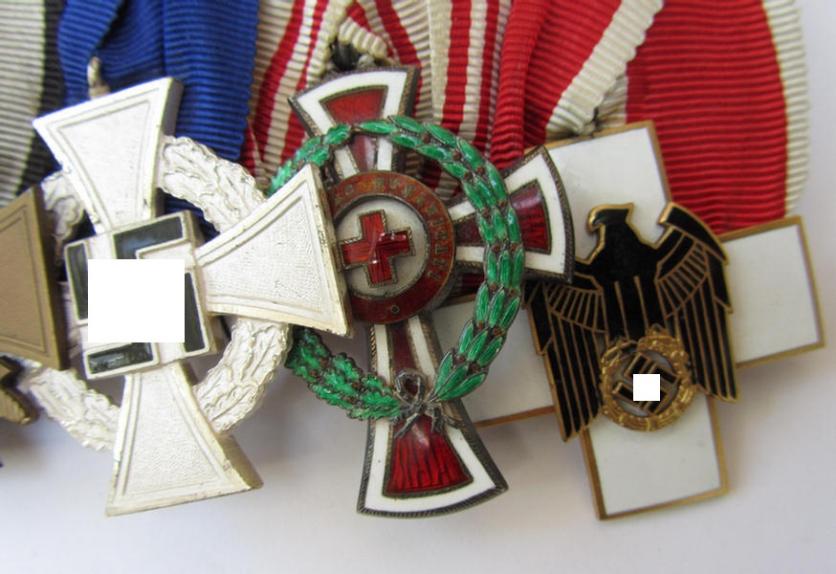
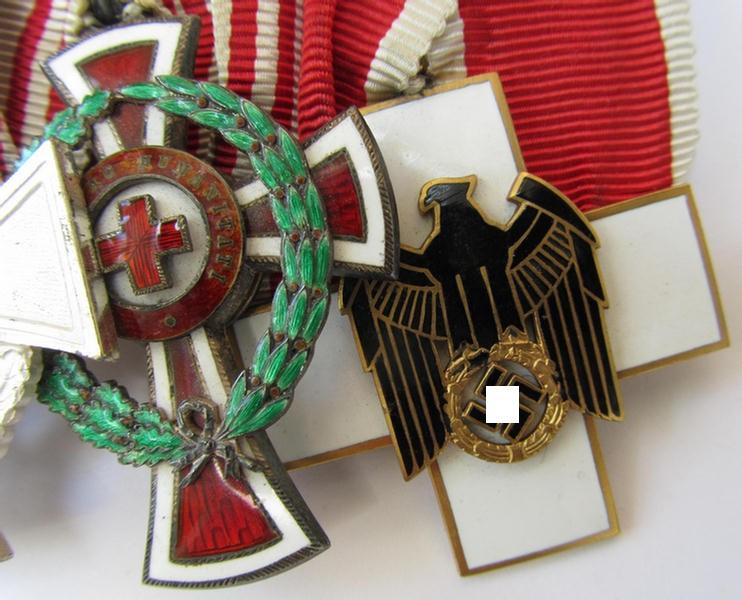
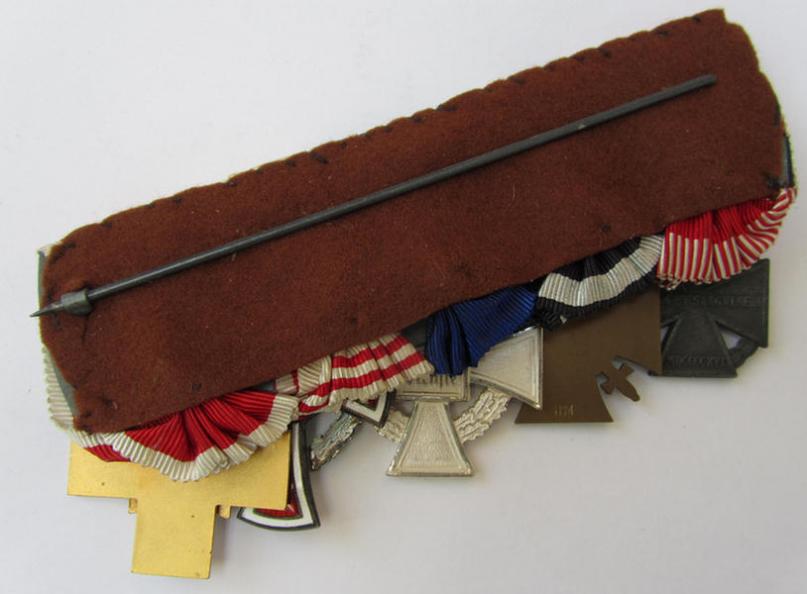 0
0 -
A nice Prussian Medal bar for 1866 and the Franco-Prussian War with a Sedlatzek tailor's label.


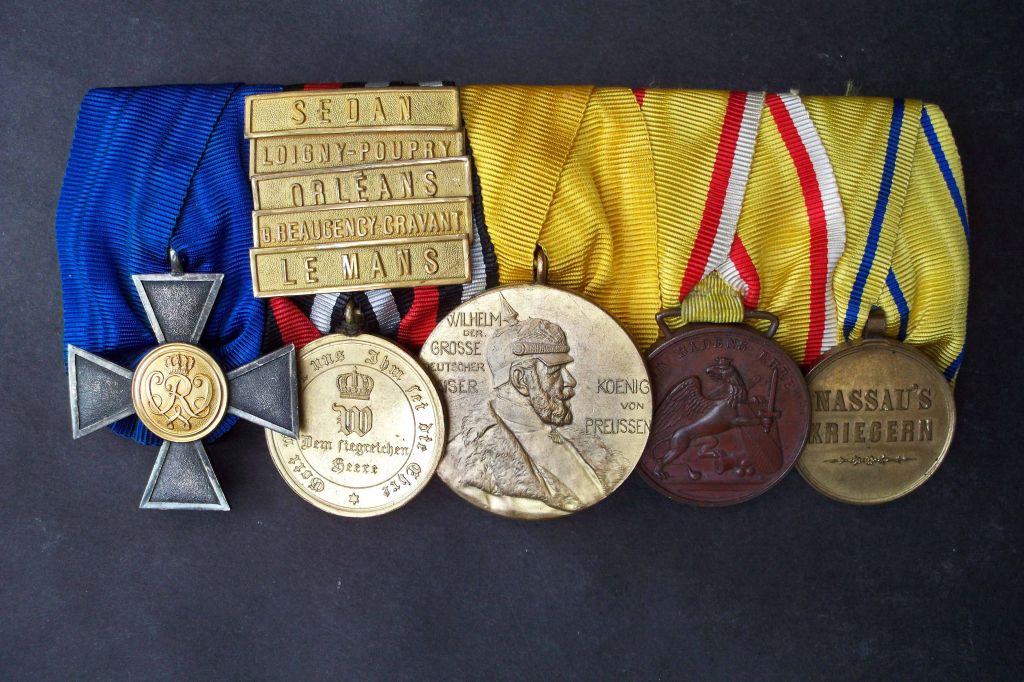 0
0



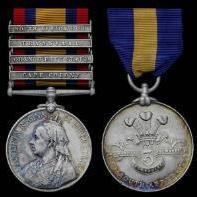
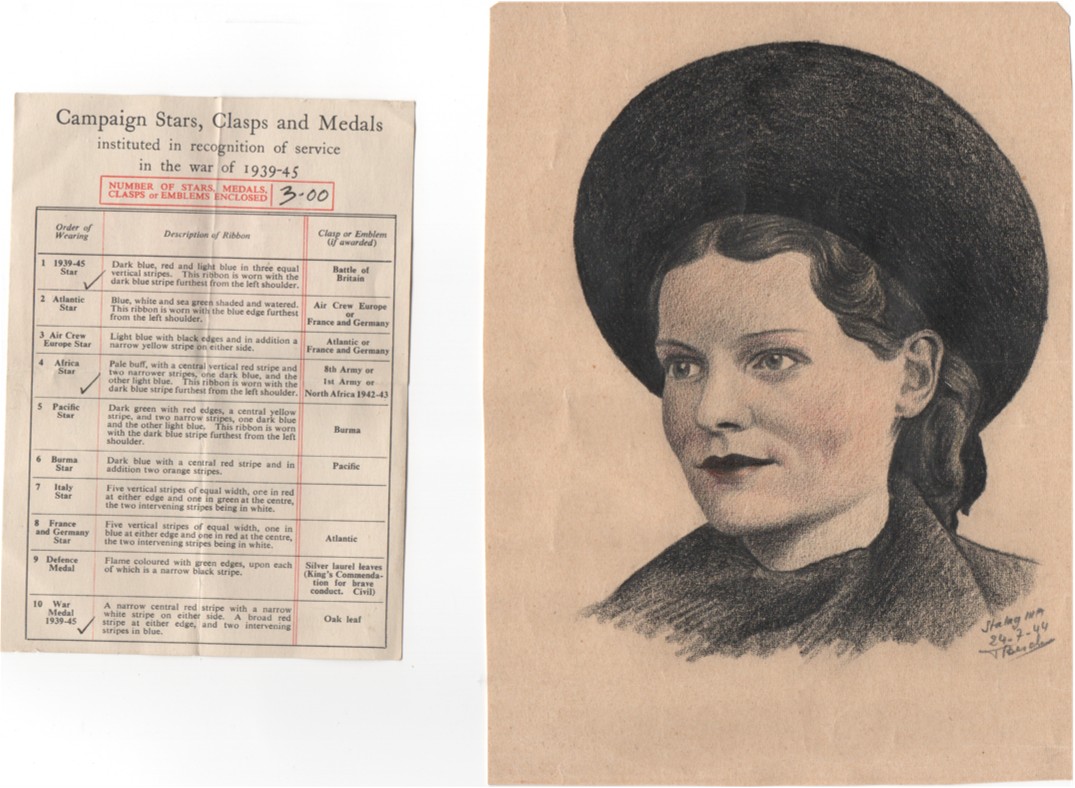




Small collection of POW groups. ** REGIONAL ADMIN. AWARD & CERT. OF MERIT. *A RECOMMENDED POST
in Great Britain: Orders, Gallantry, Campaign Medals
Posted
A group of six to P/JX 137436 PO Ernest Frank Baxter, HMS Hereward, sunk off Crete on 27 May 1941. Baxter was born on 28 September 1915 and enlisted in May 1931. He lived in Weymouth, Dorset and according to his General Questionnaire for British American Ex-Prisoners of War was captured on 29 May 1941 in Casso Straits off of Crete. He was initially in Italian PoW Camps and was in a camp in Maples from June '41 to July '41 and then Bolzano from July 1941 to 29 Oct. 1941 when he went to Campo 78 in Sulmona and was there from November '41 unitl 1 April of 1943 when he was transferred to Campo 70 at Monturano until 8 Sept. 1943. He was then sent to Moosburg, Germany from Feb. 1944 and left there in March 1944 and went to Marlag and Marlag Nord in Bremen, Germany. He was there from March 1944 to 10 April 1945. He was finally in Lubec, Germany from 8 April 1945 until liberated. He was interrogated on the Island of Rhodes on 31 May 1941 and asked wrote, "Direct questions were asked, and the questions seemed familiar with the ships past opperations (sic)."
Baxter also wrote of his escape on 3 May 1945, "Escaped from camp 70 in Italy 8th Sept. 1941. Marched out as a party. Companions were P.O. March, PO Joplin, CPO Hancombe, RSM Hennassy, one seaman and two privates. Party separated I stayed some time at Passara. Injured right ankle and was atended by and sheltered by an Italian farmer. Left him to attempt to pass over to British lines and was captured by Germans on 15/12/1943 N.W of Isclona. Marsh, Joplin and Hennassy reached British lines."